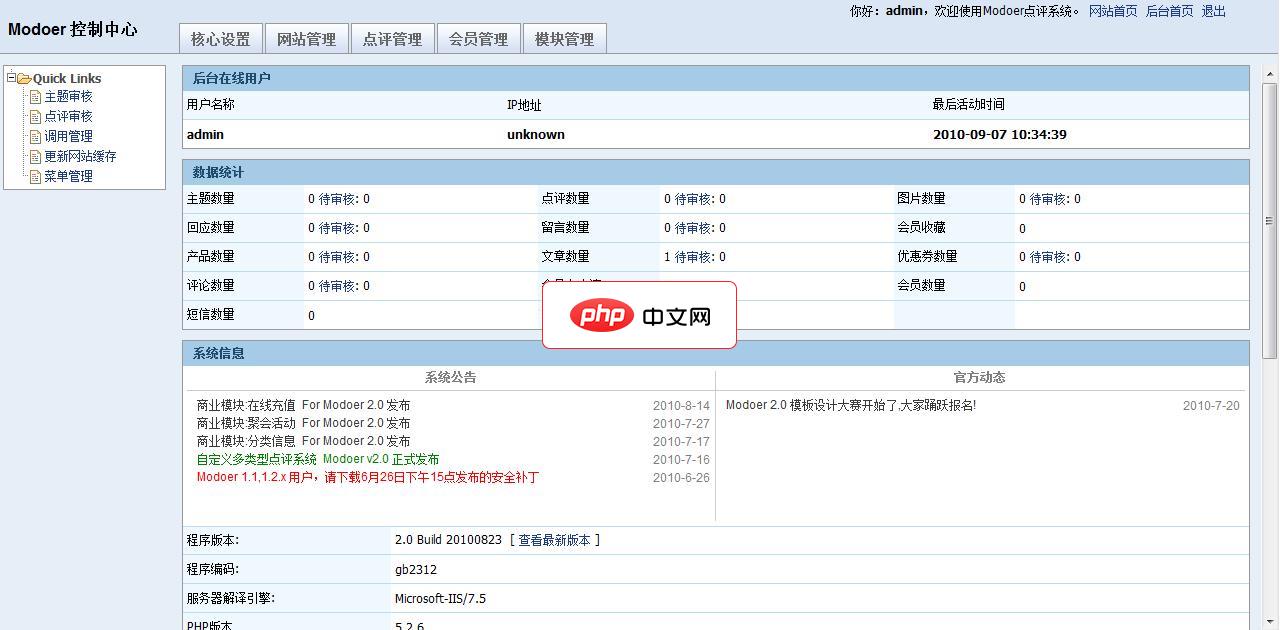css代码:
ul#portfolio{margin:0;padding:0;}
ul#portfolio li{float: left;margin:0 5px 0 0;width:250px;height: 250px;list-style: none;}
ul#portfolio li.loading{background: url(../images/spinner.gif) no-repeat center center;}
ul#portfolio li img{width:250px;height: 250px;display: block;}js代码:

Modoer 是一款以本地分享,多功能的点评网站管理系统。采用 PHP+MYSQL 开发设计,开放全部源代码。因具有非凡的访问速度和卓越的负载能力而深受国内外朋友的喜爱,不局限于商铺类点评,真正实现了多类型的点评,可以让您的网站点评任何事与物,同时增加产品模块,也更好的网站产品在网站上展示。Modoer点评系统 2.5 Build 20110710更新列表1.同步 旗舰版系统框架2.增加 限制图片
 2
2

$(function(){var images=new Array();
images[0]='./images/ads_one.jpg';
images[1]='./images/ads_two.jpg';
images[2]='./images/ads_three.jpg'; //获取了图像的数量var max=$(images).length;
//如果包含一张以上的图像,那么创建对应的UL元素家人到wrapper div中,并且调用LoadImage方法。 if(max>0){
//create the UL elementvar ul=$('<ul id="portfolio"></ul>');//append to div#wrapper$(ul).appendTo($('#wrapper'));
//load the first imageLoadImage(0,max);
} //在LoadImage方法中,循环遍历所有的图像,对每个图像创建li元素function LoadImage(index,max){
if(index<max){ //利用attr方法为li元素增加了css样式,即加上了loading的gif背景。
var list=$('<li id="portfolio_'+index+'"></li>').attr('class','loading');
//把li添加到ul元素中 $('ul#portfolio').append(list);
//获取当前的li元素 var curr=$("ul#portfolio li#portfolio_"+index);
//创建图像元素 var img=new Image();
//加载图像 $(img).load(function(){
$(this).css('display','none');
$(curr).removeClass('loading').append(this);
$(this).fadeIn('slow',function(){
//采用回调函数的方法,在当前元素成功执行fadeIn方法之后 再去调用下一个元素的LoadImage方法,这样就能实现多个图像的顺序加载了。LoadImage(index+1,max);
});
}).error(function(){
$(curr).remove();
LoadImage(index+1,max);
}).attr('src',images[index]);
}
}
})以上就是jquery实现图片依次加载实例代码的详细内容,更多请关注php中文网其它相关文章!

每个人都需要一台速度更快、更稳定的 PC。随着时间的推移,垃圾文件、旧注册表数据和不必要的后台进程会占用资源并降低性能。幸运的是,许多工具可以让 Windows 保持平稳运行。

Copyright 2014-2025 https://www.php.cn/ All Rights Reserved | php.cn | 湘ICP备2023035733号